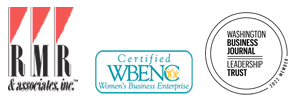The First Rule of Collateral: Sell, Sell, Sell
By Robyn M. Sachs
President, RMR & Associates, Inc.
Whether you’re excited about your booth at upcoming trade shows or the many sales calls your staff has lined up, it isn’t enough to show up and talk. No matter how good your sales people are, prospects expect and need tangible representations of your products that they can look at, read about, and keep to read again later. In other words, collateral – the brochures, flyers, and product or fact sheets that help sell your products or services.
For our purposes here, let’s talk about your brochure. It’s one of your most important selling pieces for several reasons. It can be as long as you need it to be to get your message across. Its format easily accommodates photos and illustrations that help your prospects visualize what you’re selling. And most importantly, people expect brochures. Even if your well-designed product sheet contains all the information they need to know about the product, chances are most potential buyers will ask at some point, “Do you have a brochure?”
Your brochure is the reinforcement that proves you are a legitimate company, a responsible seller, and a force to be reckoned with. That’s why, especially in our current economy, it’s imperative that your brochure work hard for you from cover to cover, and everything in between. Here are some tried and true tips for creating a brochure that sells for you.
Start selling on the cover.
Imagine that your desk is covered with 50 good-looking, solid brochures, and you only have time to pick up and look at one of them. Which one will you choose? That’s the reality your brochure may face – being buried in the pile of others that your prospect’s sales people have brought back from trade shows and exhibits, along with the ones left behind by other company reps on their sales calls.
To make yours the chosen standout, make sure it calls out to the reader with a compelling message right on the cover. Think of the cover as the first page of the brochure, and get your message started right up front.
Sell benefits, not features.
I’m going to debunk the old Marketing 101 mantra: features and benefits, features and benefits… You may want to tell everyone about your product’s techno wizardry features, but in reality, What’s in it for me? is what every buyer is asking. And it’s the benefits of your product that answer that question, not your gee-whiz features. So tell your prospects how your product will benefit them, and say it over and over so they can’t help but remember it.
Add photos to make it real.
Unless you can drag your product with you and leave it behind with every customer, the next best thing is a compelling photograph. Better yet, 10 of them! Photos bring your product to life right in front of your prospect’s eyes. I say this with a major caveat though: Choose your photos carefully. Make them work hard for you by choosing photos that demonstrate the points you’re trying to make. As a general rule, close-ups are better than photos of the whole item because they bring the product closer. Make sure every photo has a caption, too, whether it explains the photo or reinforces something related in the text. Believe it or not, statistics show people read captions 10x more than body copy.
Give it the “Heads, Subheads, Captions” test.
When busy people – like your prospects – read, it really consists of scanning a written piece and noticing whatever stands out. In your brochure, that would be your headlines, subheads, and photos with captions. So make sure your story is clearly told in those areas alone. If your readers see only those three things, will they get your message? Are the benefits of them obvious? Will they understand what’s in it for them? Will they want to read more or take action? Use the rest of your text to further explain and expand upon the main points. So before your brochure goes to press, give it the Heads, Subheads, Captions review and make sure it aces the test.
Sell, sell, sell.
Brochures are too costly to waste on flowery soft sell. Make the most of your dollars by being as persuasive as you can throughout your brochure. Every sentence should have an impact and carry the reader through to your obvious goal: taking action. So once you have taken the reader to that point, be clear in asking for the sale or action. Make it easy for your prospects to reach you through a toll-free number or a website. Give them options if you can. Not everyone wants to – or is in a place to – pick up the phone. Today, many people prefer email or a postage paid business reply card. Someone who’s traveling may find a reply card easy to toss into the mail, made all the easier because you’ve taken care of the postage. And certainly, make your call to action part of your Heads, Subheads, Captions test so that a busy reader will naturally follow from benefits to what’s in it for them to how they can reach you.
Don’t believe the old adage, “No one reads brochures.” Most people who are seriously considering your product want to read more about it. Apply the same rules to all your collateral and your sales materials will answer your prospects needs, and yours as they sell, sell, sell for you.
